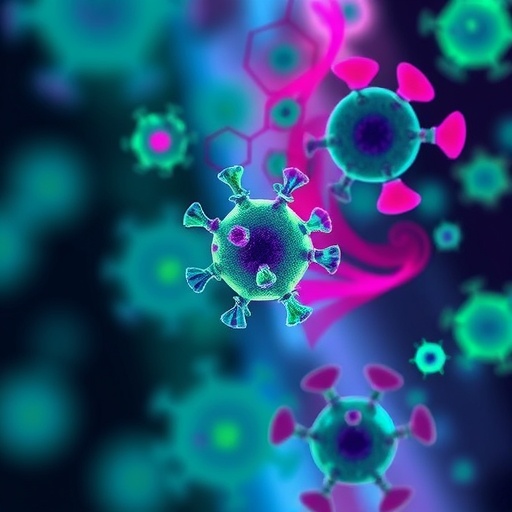In recent developments within the realm of pharmacology and therapeutic advancements, a groundbreaking article has emerged from the prestigious journal, Acta Pharmaceutica Sinica B. This publication sheds light on an innovative and potentially revolutionary treatment approach for allergic rhinitis (AR), a condition that continues to plague millions worldwide. The research pioneers a novel strategy that targets the Kelch-like ECH associated protein 1 (Keap1) system through the application of homoPROTAC-ing technology. The authors of this study have unveiled compelling evidence for the involvement of the Keap1 system in the inflammatory mechanisms associated with allergic disorders, opening the door for a new understanding of treatment modalities.
Allergic rhinitis, often characterized by symptoms such as sneezing, itching, and nasal congestion, is a widespread immune-mediated condition that has remained resistant to definitive cures. Despite the availability of various symptomatic treatments, the underlying pathophysiology continues to elude complete resolution. This study, focusing on the Keap1-Nrf2 pathway, underscores the significance of oxidative stress in the etiology of AR. The authors meticulously validated their findings using clinical samples collected from AR patients, which provided crucial insights into the biological relevance of the Keap1 system and its interactions with inflammatory mediators.
The research brings to the forefront the biological interplay between Keap1 and Nrf2, two critical protein regulators involved in cellular responses to oxidative stress. Nrf2, typically a protective factor against oxidative damage, is inhibited by Keap1 under normal physiological conditions. However, through innovative design, the researchers introduced a class of bivalent molecules with the capacity to chemically knock down Keap1. This strategy effectively liberates Nrf2, allowing it to exert its protective, antioxidative effects in cells affected by AR.
Utilizing the features of Keap1 homodimerization and its E3 ligase characteristics, the authors designed a series of compounds aimed at achieving selective chemical degradation of Keap1. The highlight of their findings is the identification of a specific bivalent molecule designated as compound 8, which exhibits a robust capability for inducing degradation of Keap1. This homoPROTAC strategy has proven to be effective across a diverse range of cell types, including human nasal epithelial cells. The implications of this advancement are significant, as the degradation of Keap1 leads to a marked decrease in inflammatory cytokine levels, providing symptomatic relief to AR patients.
In preclinical trials conducted in an allergic rhinitis mouse model, the efficacy of the homoPROTAC strategy was further validated. The research demonstrated that the administration of compound 8 not only reduced AR symptoms significantly but also mitigated the levels of oxidative stress and inflammation within the sinonasal tissue. The therapeutic benefits observed in this model underscore the potential of harnessing the Keap1-Nrf2 axis as a novel intervention point for managing allergic conditions.
The study’s authors argue that this innovative approach reshapes the landscape of treatment strategies for allergic rhinitis, a disease that has long lacked effective therapeutic options. The findings advocate for a shift in how clinicians may address AR, transitioning from symptomatic relief towards more targeted, disease-modifying therapies that can address the root inflammatory pathways.
As researchers worldwide grapple with the complexities of allergic disorders, the insights provided in this publication resonate as a beacon of hope for patients suffering from AR. With the Keap1 system now positioned as a critical target, future research could expand upon these findings, exploring the broader implications of homoPROTAC strategies in other immune-mediated conditions.
The implications of this work extend beyond just allergic rhinitis. It invites the scientific community to consider the potential of PROTAC technology in utilizing targeted protein degradation strategies for a variety of diseases characterized by dysregulated protein interactions and signaling pathways. This paradigm shift may well usher in a new era of precision medicine, wherein treatments are tailored specifically to modify disease processes at the molecular level.
In summary, the publication in Acta Pharmaceutica Sinica B presents not only a significant breakthrough in the management of allergic rhinitis but also propels the field of pharmacological therapy into new frontiers. The ongoing exploration of the Keap1-Nrf2 pathway underscores the importance of understanding foundational biological processes in developing effective treatments. As this research gains visibility, it offers an optimistic outlook for patients seeking relief from the burdens of allergic diseases.
As the scientific community continues to build upon this critical research, the hope is that therapies emerging from this work will soon transform the lives of individuals affected by allergic rhinitis and potentially reshape the overall management of allergic disorders globally.
Subject of Research: Targeting Keap1 System through homoPROTAC-ing Technology
Article Title: Chemical knockdown of Keap1 and homoPROTAC-ing allergic rhinitis
News Publication Date: 2025
Web References: Acta Pharmaceutica Sinica B
References: DOI 10.1016/j.apsb.2025.05.025
Image Credits: N/A
Keywords
Allergic rhinitis, Keap1, Nrf2, E3 ligase, Degradation, HomoPROTAC




